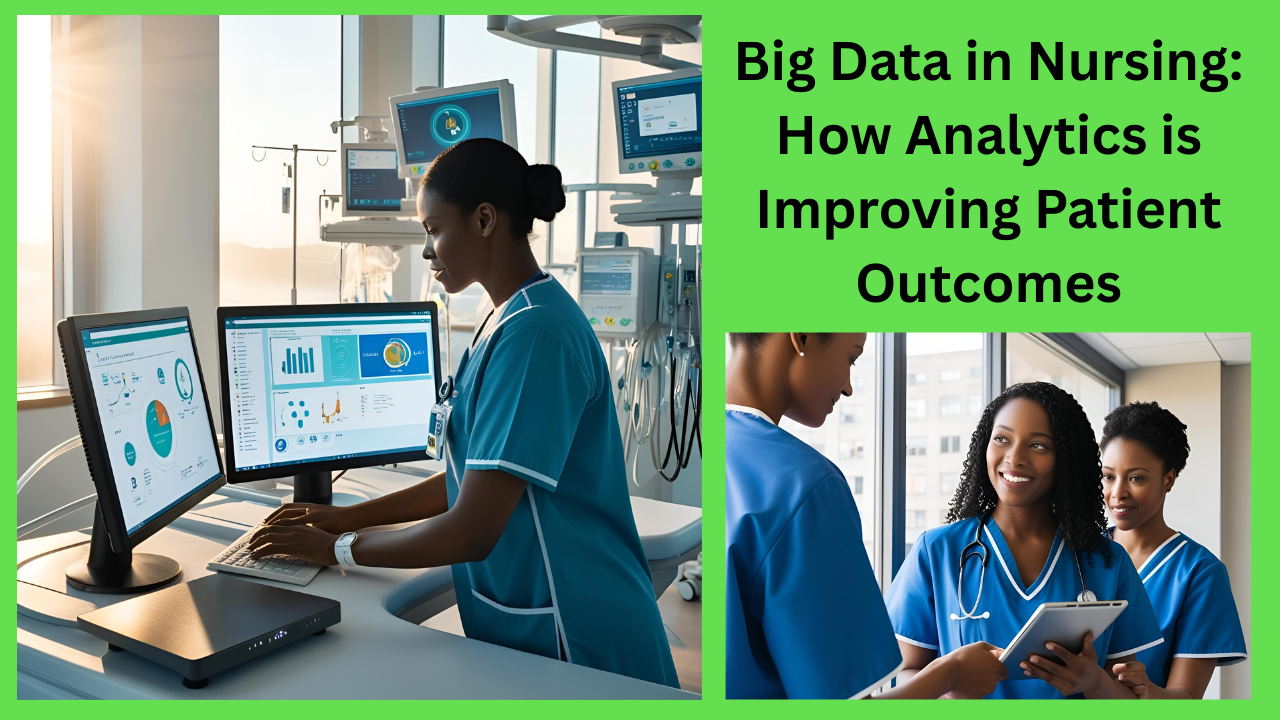Big Data in Nursing: How Analytics is Improving Patient Outcomes
Abstract: The article’s main idea is that “big data” in nursing is making things better for patients through analytics.
A Quick Look at Big Data in Healthcare
How to Understand Big Data in Nursing
What does “big data” mean?
How do they gather big data in nursing?
What Kinds of Data Are Used in Nursing?
How Nursing Practice Has Changed Over Time: A Look at the Data
From paper records to digital dashboards
EHRs play a big part in health care.
What’s Good About Big Data in Nursing
Better monitoring of patients
Predictive analytics in health care
Getting better at personalized treatment plans
Supporting nursing based on evidence
H2: Examples of Big Data in Real Life
Getting people out of the hospital faster
Finding signs of a patient’s worsening early
Taking care of long-term illnesses
What Big Data Can Do to Help Nursing Leaders
Making decisions based on data
Managing the workforce and making schedules
Concerns about ethics and data privacy
H3: Privacy for Patients
Heading 3: Safe Ways to Handle Data
How to Use Big Data in Nursing: Problems and Solutions
H3: Too Much Data
H3: Nurses don’t get enough training
Integration with Systems Already in Place
What’s Next for Big Data in Nursing?
How AI and machine learning are used in nursing
Wearable tech and monitoring from afar
The End (H2)
H2: Frequently Asked Questions
What do nurses do in the field of big data analytics?
Can big data tell us how a patient will do?
What impact does big data have on nursing education?
Is it dangerous for nurses to use big data?
What tools do nurses need to use big data well?
Big Data in Nursing: How Analytics is Making Things Better for Patients
A Quick Look at Big Data in Healthcare
Have you ever thought about how hospitals can tell when something serious is going to happen, like when a patient’s health starts to get worse? This is the exciting aspect of Big Data. It’s no longer just a tech phrase; it’s changing how nurses take care of patients. Big data is the new tool for nurses in the 21st century. It helps them speed up decisions and give more personalized care.
EHRs stand for electronic health records.
Monitoring Tools, such as heart rate monitors
Feedback and surveys from patients
Wearable tech and health apps for phones
Different types of data used in the nursing clinic include vital signs, medications, and treatments.
Data on operations, such as shift routines and staff performance
Patient behavior data, such as lifestyle and medication adherence
Outcome Data: Time to recover data, readmissions
How Nursing Practice Has Changed Over Time: From Paper Records to Digital Dashboards
Big files and unreadable notes are a thing of the past. Nurses now use sleek digital systems that update in real time. This makes it easier to see how patients are doing and act more quickly if needed.
Health records (EHRs): What They Do
EHRs are the most important part of big data in nursing. They keep all of a patient’s medical records in one place and help nurses:
Track changes over time
Get lab reports right away
Work with doctors and other experts
Advantages of Big Data in Nursing: Better tracking of patients
Monitors send data about patients all the time to dashboards, which helps nurses spot changes before they become problems. It’s like having a nurse’s aide who never goes to sleep.
Predictive analytics in health care for patients
Software can use data trends to let nurses know which patients are most likely to fall, get an illness, or have other problems. For example, a drop in blood pressure and a rise in heart rate could be signs of bleeding inside the body.
Making personalized treatment plans better
Different people have different needs. A nurse can make a care plan based on big data if:
Markers for genes
Responses to medicines in the past
How you live your life
Supporting Nursing Based on Evidence: Data shows what works. Instead of trying things out and seeing what works, nurses use real numbers to guide their actions, which makes recovery safer and faster.
How Big Data Works: Examples from Real Life
Getting people out of hospitals less often
Data helps hospitals figure out which patients are most likely to come back, usually those with diabetes or heart failure, and make sure they don’t by making specific plans for their release.
Finding signs of patient decline early
Data-driven tools Monitor subtle changes that others might overlook and inform nurses about them before a problem arises. Data drives it, akin to a sixth sense.
Taking care of chronic diseases
Nurses use big data to educate and monitor individuals with long-term conditions such as COPD or high blood pressure. This process makes proactive care the norm.
How Big Data Helps Nursing Leadership: Making Decisions Based on Data Nurse leaders use data to:
Check on the work of your staff
Streamline your work
Distribute resources well.
Scheduling and managing the workforce
Data shows peak admission times, assisting managers in scheduling the appropriate number of nurses. This approach keeps nurses from getting burned out and raises the level of care.
Concerns about ethics and data privacy Patient privacy
It is critical to be careful when handling patient info. Many nurses have to follow strict HIPAA rules to keep patient information safe.
Safe Methods for Handling Data
Hospitals spend money on firewalls and secured systems, but nurses also need to:
Log out of the machine once you’ve finished using it.
Do not share information on unprotected sites.
Problems with Using Big Data in Nursing Too Much Data
It’s easy to become overwhelmed by an abundance of information. Nurses need smart screens that display only essential information.
Nurses who don’t get enough training
Not every nurse is proficient with technology. Big data shouldn’t turn into a big headache, so training is critical.
Integration with Systems Already in Place
New data tools might not be able to “talk” to old hospital hardware. IT help is essential for integration to go smoothly.
What’s Next for Big Data in Nursing
AI and Machine Learning in Human Care
AI can look through millions of data points and find trends that even experienced nurses might miss. It’s not removing nurses; it’s giving them more work to do.
Wearable tech and monitoring from afar
Nurses can monitor patients at home using smartwatches that track oxygen levels and remote blood pressure monitors, reducing hospital visits and enhancing long-term care.
In conclusion
There is a big change happening in nursing care because of big data, not just a tech trend. It gives nurses the power to make choices more quickly, wisely, and with more care. Data will shape the future of health care, and nurses will play a big role in it. By using big data, we’re not only making things better for patients, but we’re also changing the core of nursing.
- What do nurses do in the field of big data analytics?
Nurses collect data, interpret its significance, and take appropriate action based on their findings. They play a big role in using data to make care for patients better. - Can big data tell us how a patient will do?
Yes, using past data, predictive analytics can guess the number of problems, readmissions, and recovery rates. - How does big data affect the way nurses are taught?
Data literacy is being taught in nursing schools so that future nurses are ready to work in tech-driven healthcare settings. - Is it dangerous for nurses to use big data?
Indeed, there are risks associated with using big data for nurses, including data breaches, incorrect data interpretations, and over-reliance on technology without employing sound clinical judgment. - What tools do nurses need to use big data well?
EHRs, predictive software, clinical dashboards, training programs, and tech that connects to wearables are all tools that nurses can use to make the most of big data.

